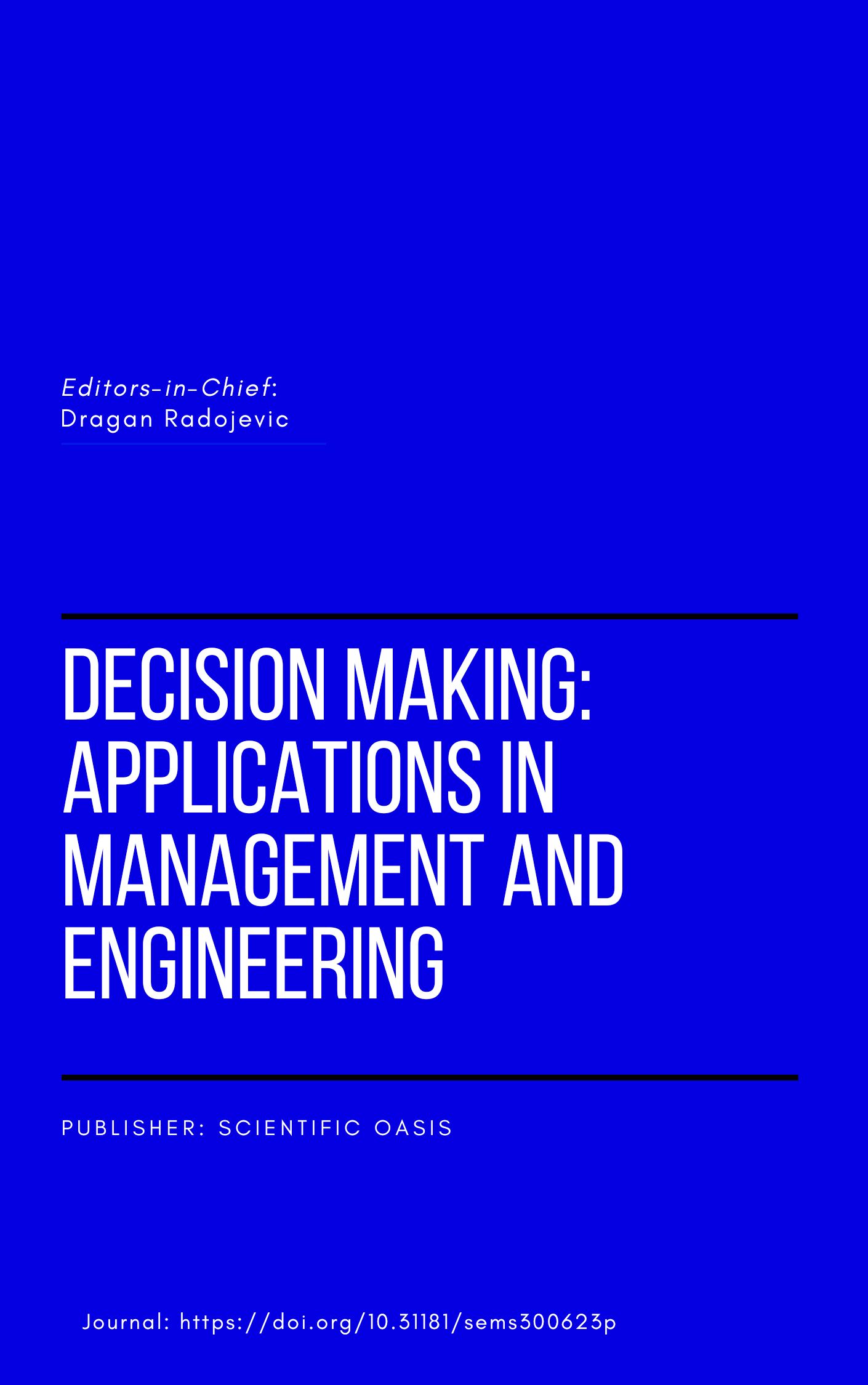Behavioural Determinants of Smart Home Device Adoption: An Empirical Study in Jeddah, Saudi Arabia
DOI:
https://doi.org/10.31181/dmame8120251351Keywords:
Smart Home Devices; Consumer Behaviour; Theory of Planned Behaviour; Subjective Norms; Behavioural IntentionAbstract
The smart home gadget industry is expanding quickly on a global scale, yet little is known about the purchasing habits of consumers in these areas. The current study uses the Theory of Planned Behaviour to investigate the behavioural intention of consumers in Jeddah, Saudi Arabia, who plan to buy smart home appliances. It examines the effects of attitude, perceived behavioural control, and subjective norm on purchase intentions in greater detail. Of the 450 respondents that received surveys, 388 were used for analysis after the questionnaires were delivered. Self-administered questionnaires were used in a quantitative cross-sectional survey design as part of the methodology. The associations between important variables were investigated using regression analysis, and the constructs were validated using factor analysis. The findings show that purchase intentions are significantly positively correlated with both subjective norms and perceived behavioural control, with perceived behavioural control being the most important predictor. However, attitude did not seem to be a major factor, indicating that in this situation, practical needs and social influence are more important than personal preferences. These results highlight how crucial it is to use social influence and build customer trust through focused marketing strategies, such as educational campaigns and affordable prices, in order to promote the uptake of smart home technology. For scholars, marketers, and legislators interested in advancing smart technology in Saudi Arabia and other developing countries, this study offers insightful information.
Downloads
References
[1] Al Falih, A.A. (2020). A Comparative Analysis of Start-Up Entrepreneurship Support between the UK and Kingdom of Saudi Arabia. Journal of Entrepreneurship and Business Innovation, 7(2), 1-1. https://ideas.repec.org/a/mth/jebi88/v7y2020i2p1.html
[2] Ajzen, I. (1991). The theory of planned behavior. Organizational behavior and human decision processes, 50(2), 179-211. https://doi.org/10.1016/0749-5978(91)90020-T
[3] Al-Jeraisy, K. and M.A.M. Mohamed. (2008). An Analytical Study of The Saudi Family's Purchase Decisions. King Fahd National Library, Riyadh. https://pdfs.openmaktaba.com/basic-islamic-books/Consumer%20Behavior-345081.pdf
[4] Teo, T.S. and S.H. Pok. (2003). Adoption of WAP-enabled mobile phones among Internet users. Omega, 31(6), 483-498. https://doi.org/10.1016/j.omega.2003.08.005
[5] Koklic, M.K. and I. Vida. (2009). A strategic household purchase: consumer house buying behavior. Managing Global Transitions, 7(1), 75-96. https://ideas.repec.org/a/mgt/youmgt/v7y2009i1p075-096.html
[6] Tonglet, M., P.S. Phillips, and A.D. Read. (2004). Using the Theory of Planned Behaviour to investigate the determinants of recycling behaviour: a case study from Brixworth, UK. Resources, conservation and recycling, 41(3), 191-214. https://doi.org/10.1016/j.resconrec.2003.11.001
[7] Gibler, K. and S. Nelson. (2003). Consumer behavior applications to real estate education. Journal of Real Estate Practice and Education, 6(1), 63-83. https://doi.org/10.1080/10835547.2003.12091585
[8] Arthanat, S., J. Wilcox, and M. Macuch. (2019). Profiles and predictors of smart home technology adoption by older adults. OTJR: occupation, Participation and Health, 39(4), 247-256. https://doi.org/10.1177/1539449218813906
[9] Liu, L., et al. (2016). Smart homes and home health monitoring technologies for older adults: A systematic review. International journal of medical informatics, 91, 44-59. https://doi.org/10.1016/j.ijmedinf.2016.04.007
[10] Chia, J., et al. (2016). Understanding factors that influence house purchase intention among consumers in Kota Kinabalu: an application of buyer behavior model theory. Journal of Technology Management and Business, 3(2). https://penerbit.uthm.edu.my/ojs/index.php/jtmb/article/view/1466
[11] Kalafatis, S.P., et al. (1999). Green marketing and Ajzen’s theory of planned behaviour: a cross‐market examination. Journal of consumer marketing, 16(5), 441-460. https://doi.org/10.1108/07363769910289550
[12] Taylor, S. and P. Todd. (1995). Decomposition and crossover effects in the theory of planned behavior: A study of consumer adoption intentions. International journal of research in marketing, 12(2), 137-155. https://doi.org/10.1016/0167-8116(94)00019-K
[13] Venkatesh, V. and F.D. Davis. (2000). A theoretical extension of the technology acceptance model: Four longitudinal field studies. Management science, 46(2), 186-204. https://doi.org/10.1287/mnsc.46.2.186.11926
[14] Teo, T. and C. Beng Lee. (2010). Explaining the intention to use technology among student teachers: An application of the Theory of Planned Behavior (TPB). Campus-Wide Information Systems, 27(2), 60-67. https://doi.org/10.1108/10650741011033035
[15] Davis, F.D. (1989). Technology acceptance model: TAM. Al-Suqri, MN, Al-Aufi, AS: Information Seeking Behavior and Technology Adoption, 205(219), 5. https://quod.lib.umich.edu/b/busadwp/images/b/1/4/b1409190.0001.001.pdf
[16] Mathieson, K. (1991). Predicting user intentions: comparing the technology acceptance model with the theory of planned behavior. Information systems research, 2(3), 173-191. https://doi.org/10.1287/isre.2.3.173
[17] Jabareen, Y. (2005). Culture and housing preferences in a developing city. Environment and behavior, 37(1), 134-146. https://doi.org/10.1177/0013916504267640
[18] Ajzen, I. (2001). Nature and operation of attitudes. Annual review of psychology, 52(1), 27-58. https://doi.org/10.1146/annurev.psych.52.1.27
[19] Han, H. and Y. Kim. (2010). An investigation of green hotel customers’ decision formation: Developing an extended model of the theory of planned behavior. International journal of hospitality management, 29(4), 659-668. https://doi.org/10.1016/j.ijhm.2010.01.001
[20] Wu, I.-L. and J.-L. Chen. (2014). Knowledge management driven firm performance: the roles of business process capabilities and organizational learning. Journal of knowledge management, 18(6), 1141-1164. https://doi.org/10.1108/JKM-05-2014-0192
[21] Blanchard, C.M., K.S. Courneya, and K. Stein. (2008). Cancer survivors’ adherence to lifestyle behavior recommendations and associations with health-related quality of life: results from the American Cancer Society's SCS-II. Journal of Clinical Oncology, 26(13), 2198-2204. https://doi.org/10.1200/JCO.2007.14.6217
[22] Iakovleva, T., L. Kolvereid, and U. Stephan. (2011). Entrepreneurial intentions in developing and developed countries. Education+ training, 53(5), 353-370. https://doi.org/10.1108/00400911111147686
[23] Numraktrakul, P., A. Ngarmyarn, and S. Panichpathom. Factors affecting green housing purchase. in 17th International Business Research Conference. Toronto, Canada. 2012. https://www.yumpu.com/en/document/view/36307937
[24] Razak, I., et al. (2013). Purchasing intention towards real estate development in Setia Alam, Shah Alam: Evidence from Malaysia. International Journal of Business, Humanities and Technology, 3(6), 66-75. https://www.ijbhtnet.com/journals/Vol_3_No_6_June_2013/9.pdf
[25] Gopi, M. and T. Ramayah. (2007). Applicability of theory of planned behavior in predicting intention to trade online: Some evidence from a developing country. International Journal of Emerging Markets, 2(4), 348-360. https://doi.org/10.1108/17468800710824509
[26] Magsamen-Conrad, K. and J.M. Dillon. (2020). Mobile technology adoption across the lifespan: A mixed methods investigation to clarify adoption stages, and the influence of diffusion attributes. Computers in Human Behavior, 112, 106456. https://doi.org/10.1016/j.chb.2020.106456
[27] Ramayah, T., et al. (2004). The relationships between belief, attitude, subjective norm, and behavior towards infant food formula selection. Gadjah Mada International Journal of Business, 6(3), 405-418. https://journal.ugm.ac.id/v3/gamaijb/article/view/14772
[28] Mordor Intelligence. (2020). Home and Property Improvement Research Reports & Market Industry Analysis. https://www.mordorintelligence.com/market-analysis/home-property-improvement
[29] Statista. (2024). Smart Home - Worldwide | Statista Market Forecast. Statista. https://www.statista.com/outlook/cmo/smart-home/worldwide
Downloads
Published
How to Cite
Issue
Section
License
Copyright (c) 2025 Decision Making: Applications in Management and Engineering

This work is licensed under a Creative Commons Attribution 4.0 International License.












